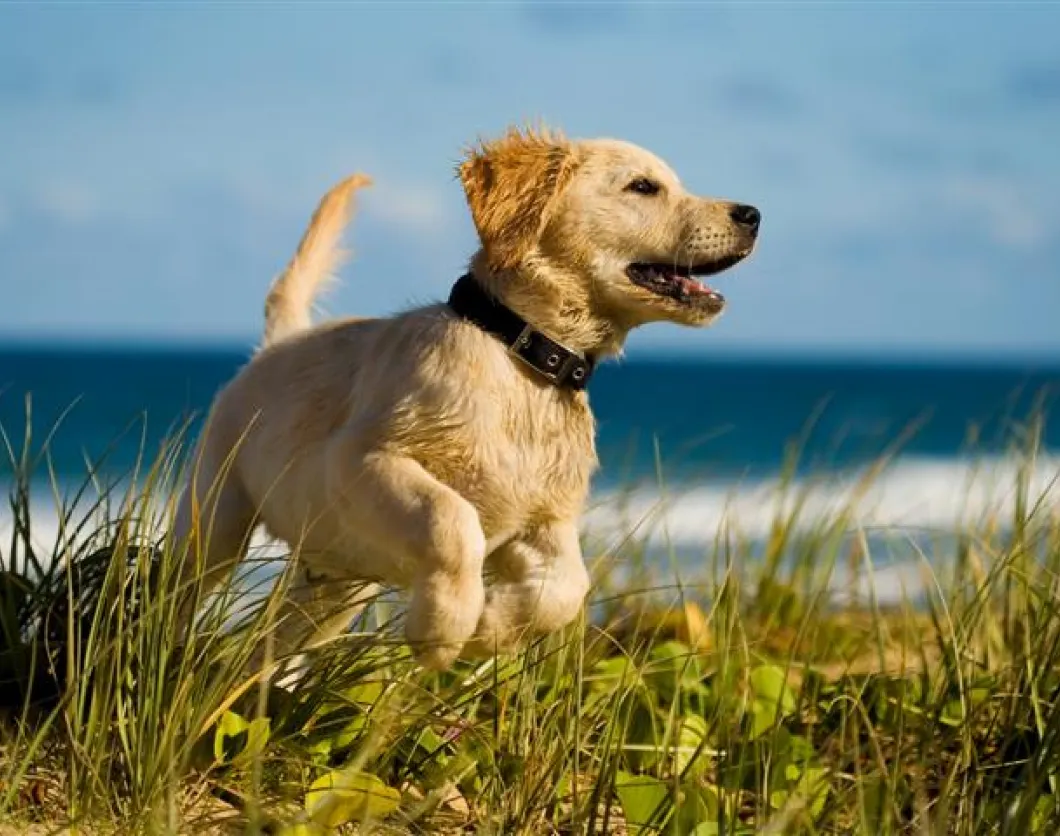When on vacation, every member of the family should find time for those precious moments which are all too rare in everyday life: above all rest and relaxation. But fun and adventure must also be part of your vacation.
Dogs are intensely social animals and as such, they are an integral part of a family. It is important to dogs that they are surrounded by familiar people. This is why they should be taken into careful consideration when vacations are being planned. Dogs and their masters can spend a wonderful vacation taking walks and frolicking in the fresh air at the seaside. Long walks and cuddling with your dog in the evening can make your vacation extra special.
When travelling with a dog, the following points must be considered: Travel itineraries should be discussed in advance with your vet. If your dog requires medication, make sure to put it in the first aid travel kit. When travelling abroad you must not forget your dog's EU domestic animal ID, which is issued by the vet. The medical certificate concerning your dog's rabies vaccination must be included in this ID. Dogs also require an identification number in the form of a microchip. Until 2011 the animal’s identification can also be determined by means of a tattoo. This law is designed to prevent the introduction and distribution of rabies. Liability insurance including an insurance number must also not be forgotten.
Luggage should contain: vaccination card, collar and extra leash (name, home address and the address of your accommodation), if required: muzzle, brushes, combs and other care products, water and food bowl, tin opener, pre-packaged food, basket, toys, beach gear: parasol, cover, towel and some treats.
The journey to your destination must be well organised for the sake of your dog. Travelling by air, for instance, is an unusual experience for dogs. Your vet may prescribe in advance a light tranquillizer for nervous animals. Dogs that are not heavier than four to eight kilos may travel in a basket in the passenger’s cabin but bigger dogs must travel in the luggage held below.
Providing your dog is well accustomed to long car rides, travelling by car should cause no major problems. It is important though to make provisions for breaks. The car is a home on the move for your dog but it is important that you know your dog well and can judge what is a reasonable journey duration. For older dogs, it might be better to reach your holiday destination in two rather than five hours.
Upon arrival, you should take some time to get to know your new surroundings for your dog’s sake and serve its usual food. This will ensure your dog feels secure and well.
The following advice may facilitate acclimatization to new surroundings. Firstly it is important that the climate of the destination fits the requirements of your dog. In this respect, Scandinavian countries offer fantastic vacations for both dog and master. In the Netherlands, dogs are sometimes permitted to run around freely on beaches and beach bars often have toy balls and food bowls for sale. Southern countries are only advisable in the off-season because the higher temperatures may be uncomfortable for your dog.
Before travelling to southern countries, dog owners should familiarize themselves with possible risks and vaccinations. Dogs travelling to the Mediterranean should wear a scalibor collar. The active agent in the collar protects against Leishmaniose disease and fends off parasites. However, it is advisable to test the collar in advance at home. Furthermore, a tick collar protects against the infectious disease Babesiose, which is commonly known as dog’s malaria.
So once your vacation with your beloved dog has been well planned and organised, there is nothing which stands in the way of a relaxing and carefree vacation!
By Gonhild Pirch










